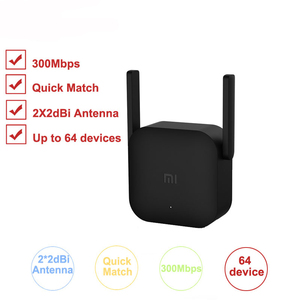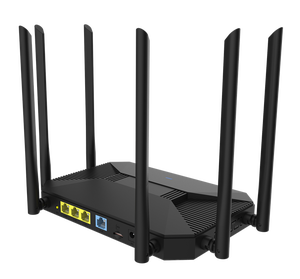(12601 products available)








































































































 Ready to Ship
Ready to Ship










































































































Repeater antennas are employed to boost and enhance weak signals within various communication systems. These antennas play a crucial role in ensuring optimal signal transmission and reception, particularly in areas with intricate topographies and dense construction.
Dual-band repeater antennas are designed to operate efficiently on two frequency bands, commonly the 700-800 MHz range for voice and data services on 4G/LTE and 1800-2100 MHz for 3G and other services. This capability allows the antenna to support multiple networks simultaneously, making it highly versatile for urban environments where various signals might overlap. Such antennas are often seen in high-rise buildings or densely populated areas as they can effectively cover wide areas with consistent signal strength.
Directional repeaters, dubbed yagi antennas, focus on enhancing the signal in a particular direction, distinguishing them from other types. Characterized by their narrow beam width, these antennas are ideal for long-range point-to-point communications where precise directional control can significantly improve signal quality and reduce interference from other directions. Common applications include rural broadband service, television reception, and any situation where the transmitting or receiving station is some distance away.
A 4G LTE amplifier is an innovative device that enhances the quality and strength of 4G LTE signals, especially in areas where service is weak or spotty. Acting as a bridge between the weak incoming signal and a reliable outgoing one, it ensures faster data speeds and more robust connections for seamless internet access, phone calls, and streaming services. The system comprises three main components: an external antenna to capture the weak signal, an amplifier to boost the signal, and an internal antenna to distribute the enhanced signal throughout a designated area.
Finally, smart repeater antennas are introduced. These antennas include built-in processing capabilities that allow them to adapt to changing environmental conditions, user needs, and network demands. Unlike traditional repeaters that merely pass signals, smart repeaters optimize signal routes based on real-time data, effectively reducing latency and increasing data throughput. They are appropriate for complex urban networks where signals can reflect off buildings, creating dead zones or interference patterns. These antennas are commonly used in dense metropolitan areas for mobile networks and in commercial buildings with heavy data usage.
To maintain uninterrupted connectivity and durability, repeaters must be constructed with robust materials and design elements that withstand various environmental conditions.
Stainless steel is often chosen for key mounting components of repeater antennas, such as the mast or mounting brackets, due to its resistance to rust, corrosion, and prolonged life. In coastal regions or areas with high humidity, stainless steel provides the necessary protection against saltwater corrosion, ensuring that the antenna remains securely mounted and retains its functionality over time.
Aluminum alloy, widely regarded for its lightweight yet sturdy characteristics, is a popular choice in the manufacture of the main body structure of many repeater antennas. This materials combination of strength and resistance to corrosion, particularly in outdoor applications, makes it ideal for antennas exposed to various weather conditions. In heavy rain, extreme snow, or intense temperatures, aluminum alloys maintain the structural integrity of the antenna, thereby enhancing signal reliability.
Polycarbonate and other engineered plastics are frequently used for housing or protective covers of repeater antennas. These materials are lightweight, highly resistant to UV radiation, and shield the antenna from dust, debris, and moisture. The durability of polycarbonate allows the antenna to retain its performance over extended periods, even in extreme environmental conditions. These materials also provide insulation around sensitive electronic components within the antenna, thereby preventing potential damage from moisture ingress or electrical surges.
Tempered glass comes into play in smart repeater antennas. This type of glass is primarily utilized within the smart repeaters for their internal components or signal processing units. Its strong and heat-resistant properties ensure that the antenna operates without failure in environments with extreme temperatures or potential impact. Moreover, TG is also resistant to UV radiation, preventing deterioration and ensuring device longevity.
The 3g repeater is incorporated in various commercial applications to improve signal strength and coverage, particularly in challenging environments or areas with weak service. It enhances cellular signals for mobile networks within buildings, on construction sites, or in remote outdoor areas where direct signals may be blocked by thick walls, complex architectural layouts, or geographical features. This capability ensures uninterrupted service in industries such as telecommunications, construction, and real estate development.
With the advancement of technology, these systems have evolved into multi-band repeaters, which amplify various 3G and 4G/LTE frequencies simultaneously. This feature makes them especially useful in urban environments where multiple signals converge, covering vast areas with a single installation. Other repeaters, like directional antennas, are installed on rooftops or at high elevations to concentrate the signal in a specific direction, such as toward a remote tower or another building. This precision enhances the range and quality of the signal over significant distances.
Dynamic signal memory is applied to reduce the repetitive learning cycles that occur when the same signal is transmitted in the same manner. It replaces information deemed unnecessary with new independent information, thus optimizing the procedure and ultimately improving performance. It is pivotal in environments where there are many signal variations, such as urban centers or large corporate spaces.
In industrial IoT applications, for instance, antenna repeaters are critical for maintaining the connection between devices and central data hubs and for creating a reliable network for machine communication, data transfer, and remote monitoring. Antenna repeaters thereby support efficient operations in manufacturing plants, warehouses, and logistics centers where cellular signals need enhancement to ensure comprehensive machine communication and continuous operations.
Cell phone repeaters can also be integrated into public transportation systems such as buses, trains, and subways. By providing continuous signal coverage while en route, travelers can enjoy uninterrupted service for calls, internet access, and other data services. Furthermore, these repeaters enable reliable communication for transit personnel, crucial for safety and operational efficiency in real-time monitoring and emergency response.
Some factors must be considered to select the right repeater antenna that will suit the customer's needs and preferences. Key among these factors is the type of antenna needed. Omni-directional antennas are useful for general purposes, such as covering a wide area around the installation site. At the same time, directional antennas focus on a specific area to improve signal strength over longer distances. Understanding the application and coverage requirements will affect the antenna design type.
Frequency compatibility should be ensured by checking the antenna's specifications. This is particularly important when using dual-band or multi-band antennas, which can enhance signals on more than one frequency band, such as 4G and LTE. The antenna gain is another important factor to consider. Higher gain antennas can transmit and receive stronger signals than low-gain antennas.
The mounting options should also be considered. Mounting the antenna should be flexible and suitable for indoor or outdoor installation to ensure proper placement and coverage. In the case of indoor installations, for example, if the repeater antenna is intended for use in a confined area, such as an office or a warehouse, an indoor antenna with suitable coverage and gain for the environment is preferred. An outdoor antenna is used for extensive areas or for over long distances to capture a signal more effectively.
The materials the antenna is made of should be assessed to see if they are weather-resistant, particularly if the antenna will be used outdoors. Lastly, ensure that the chosen antenna complies with local regulations concerning maximum permitted values for emissions and gain, for they differ by country and region.
The difference between a repeater and an amplifier? While both devices serve the purpose of enhancing signal strength, their operations critically differ. A repeater receives a signal, reprocesses it, and then retransmits it. In contrast, an amplifier simply boosts the signal without reprocessing it. Therefore, repeaters generally provide better signal quality over longer distances, whereas amplifiers are suited for smaller areas with weaker signals.
What factors affect the performance of a repeater antenna? The performance of a repeater antenna is influenced by several factors, including the antenna's design, surrounding terrain, buildings, and vegetation. Other elements include the frequency of the signal, which can affect penetration and coverage, as well as atmospheric conditions. Finally, any interference from other electronic devices or signals within the vicinity can also impact performance.
How do repeaters benefit IoT applications? Repeaters are vital for ensuring reliable cellular signals, bringing long-distance communication, which is one of the critical requirements for IoT applications. They particularly enhance the signals in challenging environments, enabling seamless data transmission for real-time monitoring and analytics.
Can repeaters be used in rural areas? Yes, repeaters are especially beneficial in rural areas by compensating for the distances between cell towers and the user's location, which helps to provide a stronger signal within the user's environment.
Do repeaters work with all cellular frequencies? No, cell phone repeaters are specifically designed for particular cellular frequencies or bands. It is, therefore, important to use an antenna compatible with the specific cellular network frequencies to ensure proper operation.